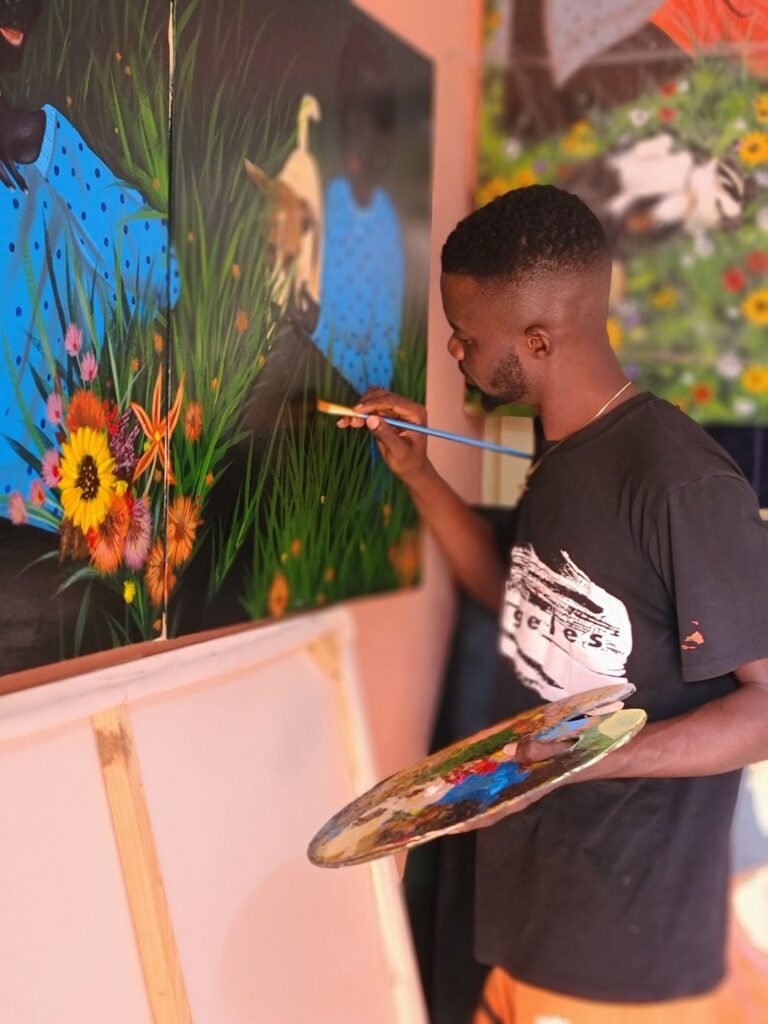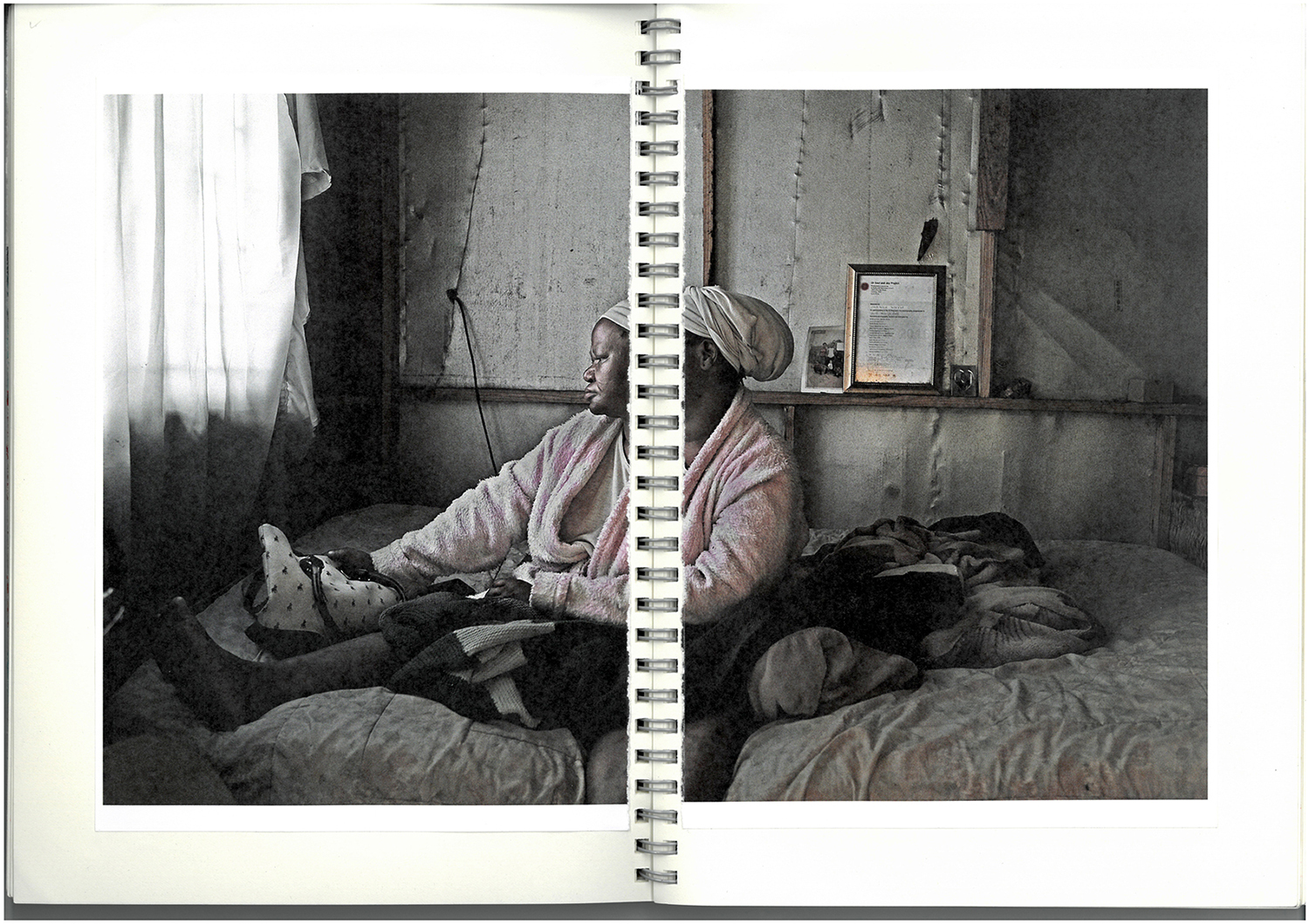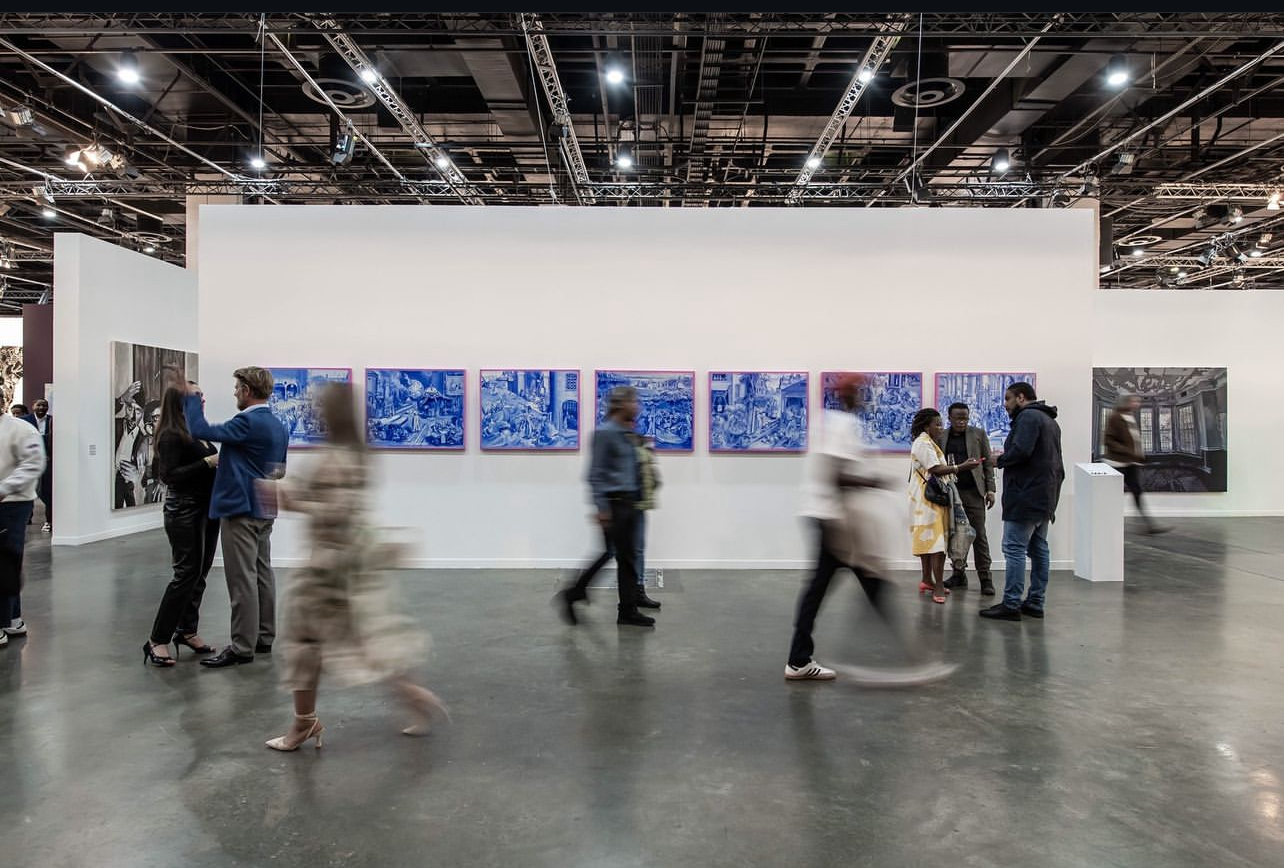Olasunkanmi Akomolehin’s work in the studio is guided by his observations of the world around him. His naturalist and maximalist portraits of contemporary Black figures explore human conditions. His subjects are often distorted and heavily backdropped by vibrantly coloured floral patterns. Using oil and acrylic on canvas, they are portrayed as diverse and authentic to peel apart the facade of his subject’s emotions.
Courtesy of the artist
Olasunkanmi Akomolehin (b. 1995) is a Nigerian-born visual artist. He started his art journey at Rufus Giwa Polytechnic before proceeding to pursue a Higher National Diploma Degree in Painting at Yaba College of Technology, Lagos, Nigeria. In his words, his artwork narrates stories of the past, present, and future. The central themes in his art are identity, mental health, and wellness, as he sheds light on the struggles and triumphs of people living with mental illness. His works have been shown in group exhibitions in Nigeria and across the world, including the United States, Italy, and China.
Akomolehin sat down with Omenai to have a conversation about what inspires his art, the wonder that goes into his practice, and the emotions he conveys in his work.
How would you describe your art?
Olasunkanmi Akomolehin: My art draws from personal challenges, discrimination, and the beauty of nature. I portray diverse individuals through oil and acrylic, focusing on dark skin tones. Nature’s vibrant colors symbolize hope and resilience. Animals, especially dogs, teach me compassion and loyalty. My art highlights mental health struggles, embraces unique identities, and confronts gender inequality. I aim to spark conversations, foster empathy, and inspire positive change in society, believing that art has the transformative power to educate and inspire.
Courtesy of the artist
The characters in your portraits are mostly unrecognizable. Who are the subjects in your work and how do you find them?
OA: The majority of my paintings feature subjects that are deliberately distorted as I apply my artistic style. These subjects often consist of both individuals I’ve encountered in real life and professional models, including some of my close friends.
Have you always done portraiture? If not, how and when did you decide on portraiture?
OA: I primarily focus on portraiture, adapting my work according to the specific ideas and references that I’m currently exploring.
Tell me about your process of creating a new artwork.
OA: You know, one of the most amazing things about creating art is that moment when inspiration hits you. It’s like a burst of energy that makes you want to grab your sketch pad immediately! So, I start by sketching out my ideas. I let my imagination flow, and it’s such a beautiful experience. After I have my sketch, the next step is to prepare my canvas. I get all my colours, brushes, and everything else I need ready. It’s like setting the stage for something incredible to happen. Then comes the magical part! I take what I’ve sketched and begin to transfer it onto the canvas. As I paint, it’s as if the artwork starts to come alive. Each brushstroke adds a new layer of depth and emotion to the piece. It’s like the canvas has a life of its own, and I’m just guiding it toward its full potential.
What is the source of your inspiration for your work?
OA: Often, my creative inspiration arises from two main sources: my personal experiences and interactions with people, as well as taking the time to step out of the studio and observe the world around me. These experiences and observations play a significant role in motivating me to create.
What are the major themes and questions that you address in your paintings?
OA: My artistic vision is centered around mental health and wellness, drawing inspiration from my personal experiences. Additionally, I am deeply committed to addressing and advocating against gender inequality.
Who are some of the artists who have inspired you and how have they shaped your artistic career to date?
OA: The artists who have most deeply inspired and influenced my artistic journey are none other than my peers in the art industry. Through shared experiences, creative exchanges, and unwavering support, they have left an indelible mark on my approach to art, igniting a continuous drive for exploration and growth.
Tell me what your favourite (3) works are, and why?
OA: My three titled works, Sown among Thorns, Times of Renaissance, and Grass could be Green, are a reflection of my personal journey through life experiences and growth. Each piece captures a distinct aspect of my life’s challenges, transformations, and profound moments of embracing grace. They serve as a testament to the profound impact these experiences have had on my artistic expression.
Courtesy of the artist
What messages and emotions do you aim to convey in your work?
OA: In my work, I aim to convey empathy, understanding, and resilience toward mental health challenges and gender inequality. I seek to evoke hope, healing, and empowerment, sparking awareness and reflection. Through unity and breaking barriers, my art aims to foster a sense of solidarity and advocate for a more compassionate, inclusive, and compassionate society.
Are there any upcoming projects or exhibitions that you’re particularly excited about?
OA: Definitely! I am thrilled to be part of the upcoming OMENAI group art exhibition. It’s one of the exhibitions I am currently working on, and I can’t contain my excitement about it.
Courtesy of the artist
Iyanuoluwa Adenle is a Nigerian art writer, essayist, and poet based in Lagos. She is currently the head writer at Omenai. Adenle has contributed to a number of art publications, including Tender Photo, Art News Africa, Pavillon 54, and Omenai.






